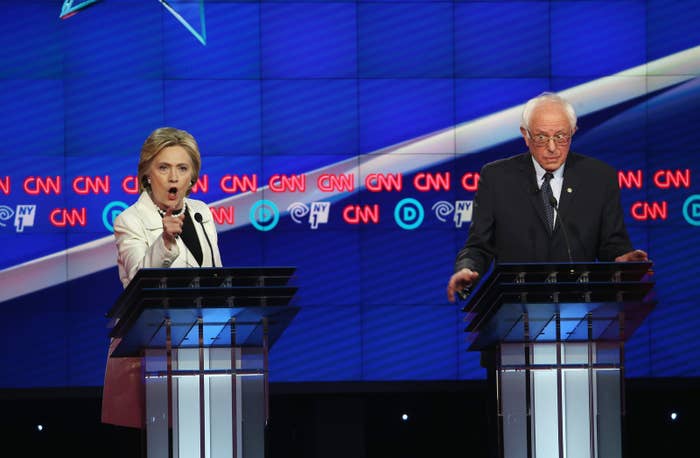
To accommodate a potentially vast field of presidential candidates, the Democratic Party will hold a total of 12 primary debates and is prepared to split the first two debates, scheduled for June and July of 2019, into two consecutive nights, with each lineup set by random public draw.
The debate plans, outlined on Thursday by Democratic National Committee chair Tom Perez on a call with reporters, reflect an ongoing effort by the party to respond to widely felt concerns about the fairness and transparency of the 2016 nominating process.
During that primary, Hillary Clinton’s Democratic rivals, Bernie Sanders and Martin O’Malley, both raised questions about the way the debate schedule benefited the frontrunner by limiting the process to six debates scheduled late in the primary. Months later, stolen emails from the Clinton campaign, released on WikiLeaks as part of the Russian cyberattack on the election, showed that early on in the campaign her senior aides sought to influence the debate process by minimizing the number of debates and pushing the schedule back “as late as possible.”
Perez, the former labor secretary who stepped in as DNC chair almost two years ago, told reporters that he and his aides consulted former candidates and campaigns during more than “100 hours of conversations” for advice on revising the debate process ahead of 2020.
“Our north star principle is to give people a fair shake,” Perez said on Thursday.
The DNC is still finalizing the metrics that will be used to determine the candidate eligibility threshold for debates. Officials said they will include more factors than just polling — including grassroots fundraising and “other objective measures that reflect a candidate’s support.”
The debate season will begin in June 2019 and end in April 2020, with six debates in 2019 and six in 2020.
The first four states in the nominating contest — Iowa, New Hampshire, Nevada, and South Carolina — will not host a debate until the run-up to those votes in 2020. (Perez said it’s still possible that California, a crucial state in the primary calendar that will kick off early mail voting before New Hampshire even holds its primary, could still hold a debate in 2019.)
DNC officials are preparing for a field similar in size to the Republican primary in 2016. The GOP designed a debate format that split the candidates into two groups — a so-called undercard debate with low-polling contenders, broadcast earlier in the night, and a main-stage primetime debate with the perceived frontrunners. Critics said the structure limited access to lesser-known candidates and imposed a “junior varsity” and “varsity” dynamic on the race.
It’s a format that DNC officials wanted to avoid as they crafted their debate plans late this year.
The solution they came up with will only apply to the first two debates, scheduled for June and July 2019. Depending on the size of the number of candidates who meet the threshold to debate, the DNC will split the first two debates into a sort of double-header, held on two consecutive nights. The lineup for each night will be determined at random, by “public draw,” Perez said.
“We expect that large field and we welcome that large field,” the chair said. “The more voters that see our candidates, the more voters that will vote Democratic.”
The DNC did not address the possibility of extending the double-header format beyond the two debates, though it’s conceivable that the field of Democratic candidates will remain just as large until the lead-up to the first results of the nominating contest in Iowa and New Hampshire.
Officials said candidates are welcome to participate in presidential “forums” — or events where one candidate appears onstage at a time — but not non-party-sanctioned debates.
